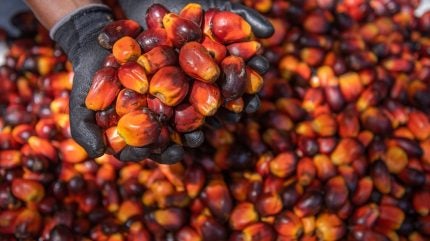
World food commodity prices fell month-on-month in May driven by declines in maize and palm oil prices, despite high butter and bovine meat prices.
The FAO Food Price Index, created by the Food and Agriculture Organization of the United Nations, averaged 127.7 points in May, a decline of 0.8% from April. However, the index was 6% higher than its level in May 2024.
Of the five commodity groups tracked in the index, prices for vegetable oils, cereals, and sugar fell, while dairy and meat saw increases.
The FAO Vegetable Oil Price Index dropped 3.7% from April, with all major oils recording lower quotations.
“International palm oil prices declined markedly, primarily due to seasonal output and availability increases in South East Asia. Global soy oil prices were impacted by higher supplies in South America and subdued demand for biofuel feedstock,” the UN agency said. today (6 June).
“Rapeseed oil prices eased on improved supply prospects in the European Union, while sunflower oil prices fell due to weakening global import demand and reduced price competitiveness.”
The FAO Cereal Price Index dropped 1.8% from April, standing 8.2% below its May 2024 level.
“Global maize prices declined sharply, owing to strong harvests and robust availability in Argentina and Brazil and expectations of a record crop in the US,” said the FAO.
Global wheat prices fell due to better crop conditions in the northern hemisphere, while the FAO All-Rice Price Index rose by 1.4%, “driven by firm demand for fragrant varieties, higher prices for Indica rice, and currency fluctuations”.
The FAO Sugar Price Index decreased by 2.6% in May, primarily due to “concerns over the uncertain world economic outlook, possible weaker demand from the beverage and food processing industries, and expectations of a recovery in global production next season”.
The FAO Dairy Price Index rose by 0.8% in May, “with strong demand from Asia keeping international butter prices at historic highs and spurring higher prices for cheese and whole milk powder”.
The FAO Meat Price Index rose by 1.3% from its revised April level, driven by “higher quotations for ovine, pig and bovine meats, with the latter reaching a new historic high”.
In contrast, poultry meat prices declined, “driven by lower quotations in Brazil, where the detection of high-pathogenicity avian influenza on a commercial farm in mid-May prompted import bans by several major importing countries, resulting in surplus supplies”, the FAO added.
The UN agency also released its latest Cereal Supply and Demand Brief, projecting a “record” global cereal production of 2,911 million tonnes in 2025, a 2.1% increase from 2024.
Global cereal utilisation is expected to rise 0.8% in 2025/26 to 2,898 million tonnes, with food consumption growing 0.9% and feed use increasing 0.5%.
With production exceeding utilisation, world cereal stocks are forecast to grow 1% to 873.6 million tonnes, recovering from last year’s decline. The global stock-to-use ratio will hold steady at 29.8%, the FAO predicted.
Global cereal trade is set to rebound 1.9% to 487.1 million tonnes, driven by a 3.8% rise in wheat trade, despite a 0.7% drop in rice trade.
<!– –>

